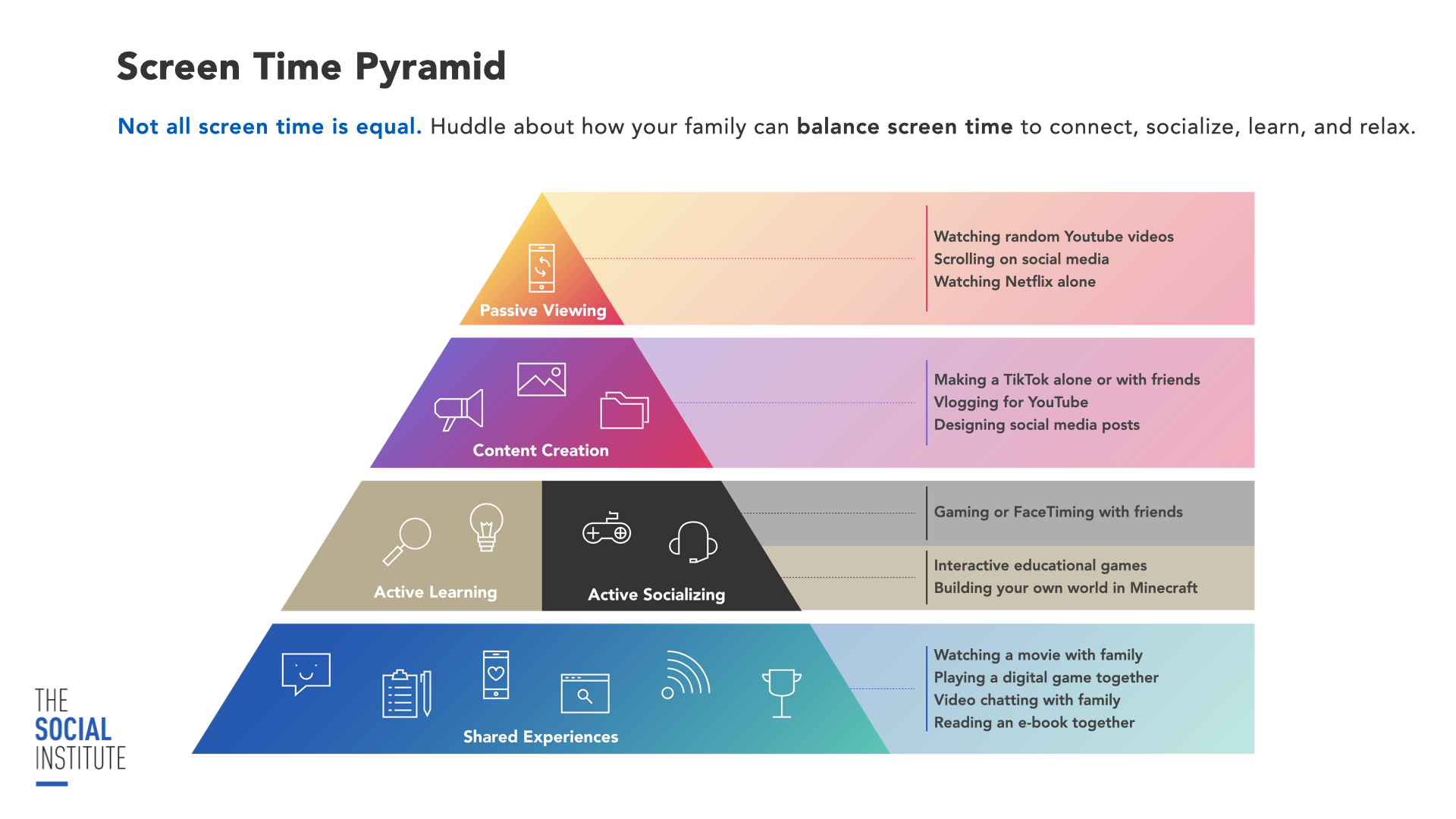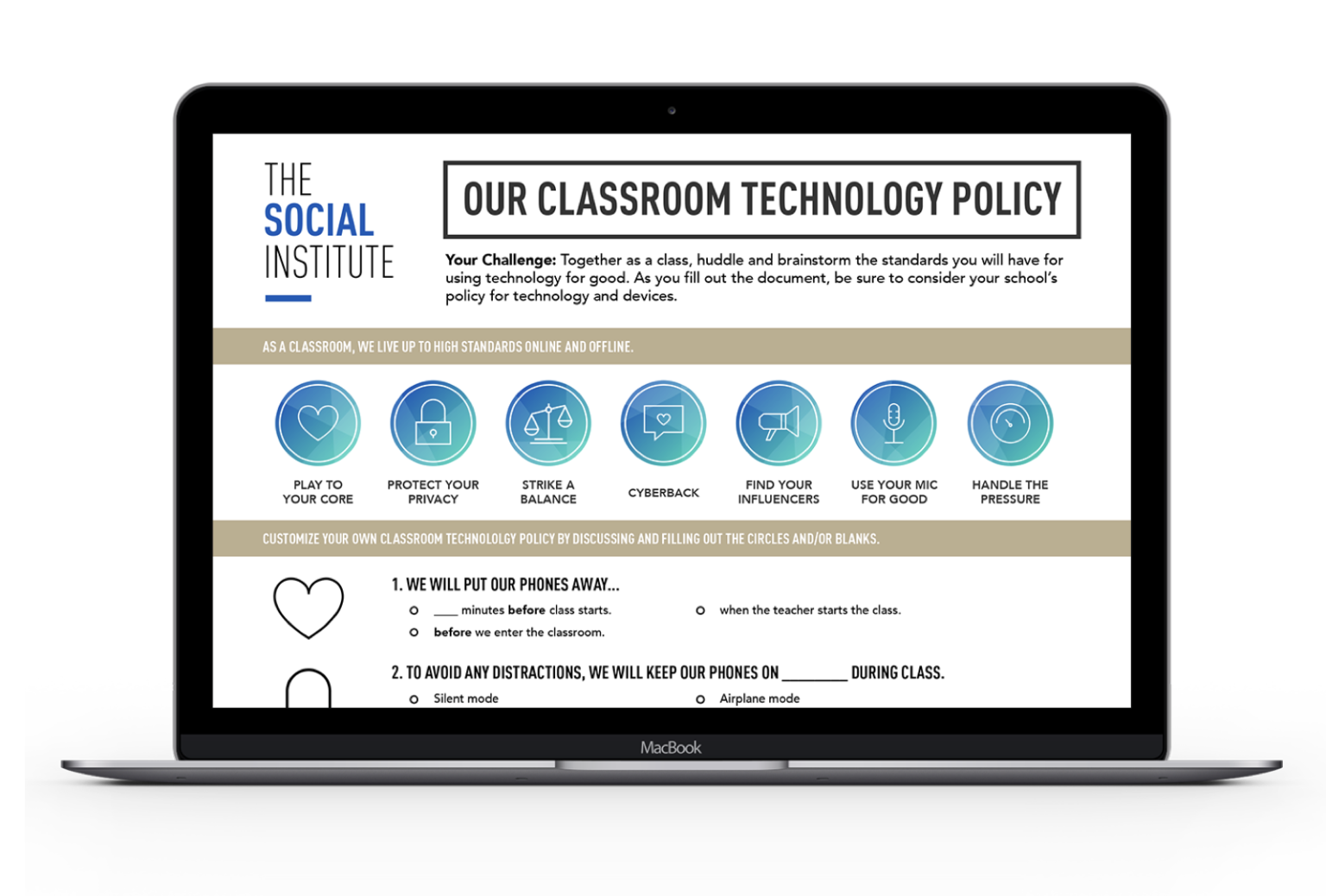It’s also important to note the benefits of social media and tech within the classroom. Social media isn’t just for students. It’s a platform for everyone to connect, learn, share and inspire. Educators are using apps like Pinterest, X (formerly Twitter) and even TikTok to level up their classrooms and improve students’ learning experiences. In fact, 80% of K-12 teachers who integrated social media into their classrooms recognized its positive impact. Take high school science teacher Winnie Sloane. She uses students’ favorite apps, like YouTube, TikTok, and Instagram to post lessons. She reaches students who are on different platforms and ensures her lessons are accessible to all of her students through Google Docs.
With the use of educational technology increasing by 99% since 2020, educators often integrate collaborative learning solutions like #WinAtSocial to increase student engagement. After all, students with high engagement, the degree of attention, curiosity, interest, optimism and passion students show while being taught, perform 21.9% higher in all subjects, as compared to students who are not engaged.
Still, the challenges of screen addiction or “doom scrolling” that many students face are real. Equipping students and teachers to build strong relationships, foster healthy classrooms and set standards for how they want to use technology is essential. Otherwise, we have simply given students the keys to the car with no driver’s education. Schools can establish clear guidelines in the classroom; agreeing on technology and phone policies and determining how to navigate social media in the school is important. But where do we start?
Inspiring engaged classrooms
Considering how positive social media and tech use can elevate students’ learning, we suggest these strategies for managing digital distractions in your classrooms. These will empower you to implement social media and tech in your classrooms with confidence.
Collaborative Learning
Individualized learning during which students stare at a screen can be exhausting for them and disengaging for teachers. Some software encourages students to stare at a screen with almost no interaction with peers or teachers. This approach often removes teachers from the learning, while students can become distracted due to long periods of time spent on their devices. Similarly, when students attempt to perform multiple online tasks during a specified time, it can interfere with students’ attention and working memory.
Some tech, however, encourages breaks. Through a combination of “tech break” and collaborative learning solutions, teachers can balance tech and conversation. Technology like #WinAtSocial encourages students to take a break from tech and engage in peer-to-peer discussion, facilitated by a teacher. This occurs while the technology is being used, supporting a healthy balance of tech-enabled lessons and discussion.
The 45-Degree Rule
While using laptops in class can be an engaging way to promote high-character decision-making in students as they navigate technology, it can also be tempting for students to get off-task and begin Googling something not class-related, check their email or even attempt to log in to the desktop versions of their favorite apps. Implement the 45-degree rule in your classroom that encourages students to tilt their laptop screens down while you’re teaching. This rule is a simple way to recenter your students’ attention back to you and away from their screens.
Walk Around Your Classroom
It’s normal to assign individual work that students will complete on their devices, whether they’re working on a Google Doc or building a presentation. To ensure they stay on task, walk around the classroom to keep your students accountable. This way, you can see what they’re navigating on their screen, and it’s harder for them to get distracted by other tabs.
Using Tech to Control Tech
Educators have shared that having a well-defined plan for empowering students is the most effective approach to minimizing digital distractions in the classroom. Explore these concentration apps, endorsed by both students and educators, to assist students in maintaining focus during class.
Focus Mode. Students can create their own focus options based on what time of the day it is or what they want to accomplish. Encourage your students to set up a “School” focus mode, where only certain apps related to school can send notifications during school hours.
Forest App. In this app, students will virtually plant a tree and watch it grow while working. The catch? Their plant won’t grow if they’re using their device. The longer you stay off your device, the more your tree grows.
Flora App. This app will let you choose when you want to block certain apps during a set schedule. If your students have difficulty not checking their devices for Snapchat notifications or messages, this app can help them temporarily restrict apps like Snapchat or messaging.
Freedom. Similar to Flora, this software blocks your favorite websites and apps on all of your synced-up devices for a schedule you can set up. Incorporating this software into your daily schedule as students log in to their devices frees them from distractions as they complete their schoolwork.
If your students struggle to strike a balance with social media and tech this year, share these apps and features with them. You can also have them coach up and share tips that work for them with their classmates, because, after all, students are often the social media experts.
Huddling with your students on a game plan for managing screen time
To foster open discussions and build trust between you and your students, consider huddling with your students to collaboratively agree on the standards you will have for technology in your classroom. Huddling as a class encourages an engaging learning environment and for everyone to be on the same page when it comes to how you will navigate social media and tech positively as a group.







